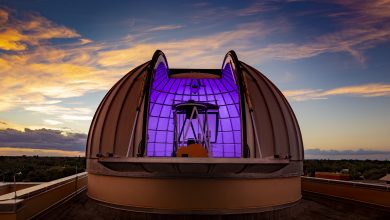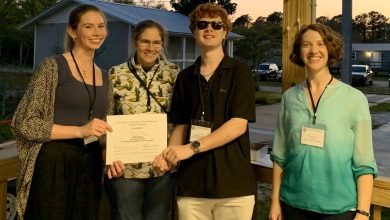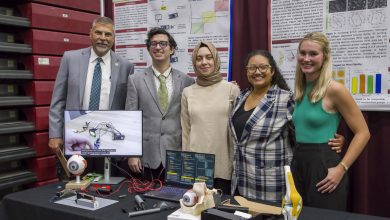Cool Class: Writing about Science
So, the really cool thing about being a communication major is that most of your professors have real-life experience under their belts, and they also have connections out in the “real world.” This can sometimes give us an upper hand when it comes time to find a job or an internship, but it can also help us meet some awesome people so that we can pick their brains about what they do, and sometimes we can even collaborate with them to create awesome content.
Each year, Professor Heidi Hatfield Edwards of the communication department gives students a hands-on, real world experience with writing in her Writing about Science class. Last year, she and Mara Bellaby, News Director at Florida Today, paired up to assign science news stories to students, and the class worked on stories about astronauts traveling to Mars and how being in space affects human health.
This year, Bellaby came to our class and talked about a lecture that she attended, where an assistant professor at Florida Tech named Catherine Neish was one round away from being chosen for NASA’s Discovery program. Neish and her teammates were working on a project called TiME, Titan Mare Explorer, where they would explore the oceans of Titan, Saturn’s largest moon.
There were many story ideas that stemmed from this concept: what is it like to be so close to winning a bunch of money for research, and then not being chosen? TiME was one of three concepts in the last round of Discovery; the others were Comet Hopper (Chopper) and Mars Insight. And as many people know, Insight won.
I worked on the Comet Hopper story. I found that it’s not as easy to write about science as people may think, and I think we all had a little trouble here and there.
I thought it’d be like writing any news story. Get the story idea, go out and interview people and get quotes, gather all the information and report the story. But instead, there were some challenges.
Since we are reporting on science, we had to do a lot of research to understand the concept of the Comet Hopper. It was a lander that would gently “hop” onto the comet multiple times, and probe the nucleus of the comet, recording changes over time as it got closer to the sun.
The problem was, there wasn’t a lot of information out there. People didn’t release a lot of information online, and when we interviewed the experts, they didn’t release too much information on what will be happening in the future.
Another challenge was, our interview subjects were the people who worked on the project itself, and they were far away, so we had to use Skype. It took a long time to get interviews, because we had to connect with them via email, and we couldn’t just pick up the phone and call or walk into their offices.
There was also a LOT of pressure to get the facts right. This is never difficult, to just report the facts, but the pressure was there because it was our first time doing a science news story and there wasn’t as much information as I’d have liked. My teammates and I had to dig to understand what it was all about.
That’s what I took away from writing about the Comet Hopper project. When writing science news, no one is going to lay out all the facts for you. It’s up to you to do extensive reading to try to understand the science. Because you can’t write a science article without understanding the science first, and since I’m not a scientist, it was extremely challenging.





